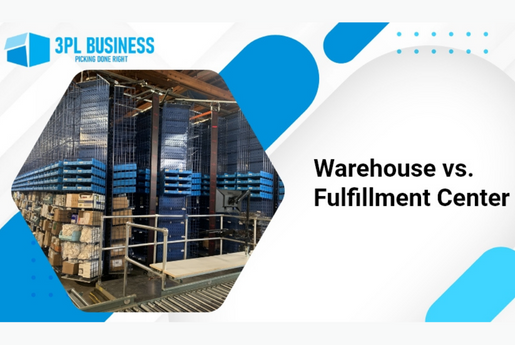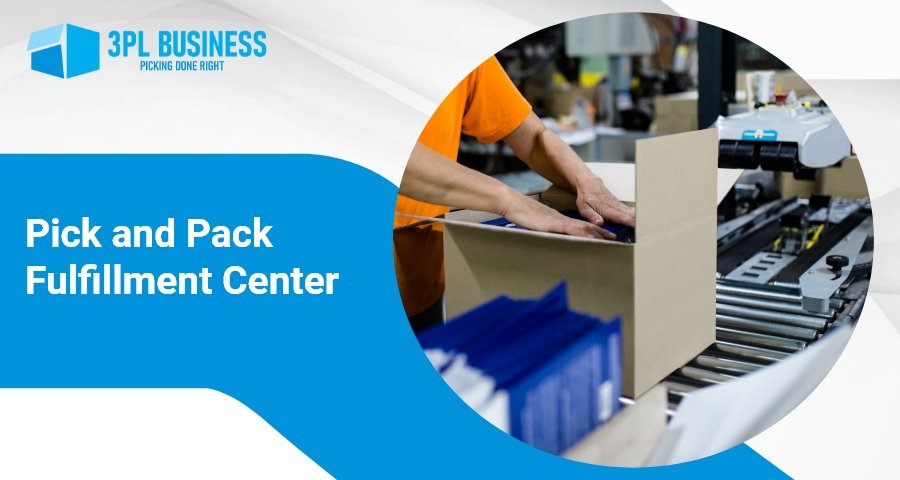Warehouse vs. Fulfillment Center: What is Your Choice?
- January 5, 2023
- Posted by: admin
- Category: Newsletter

Fulfillment centers and warehouses have been an integral part of the packaging industry for several years. These terms are often used interchangeably and are related to order fulfillment. Fulfillment centers and warehouses perform similar functions; but differ slightly in terms of physical differences. Are you intrigued to know how these terms differ or how they contribute to order fulfillment? If that sounds yes, this post focuses on the same and more. Contact us today to discuss your eCommerce fulfillment requirements. We will be happy to answer your queries.
What is a Warehouse?
A warehouse spans over 10,000 square feet to 100,000 square feet area where goods are stored in different phases of fulfillment. It serves as the center point of supply chain management.
Depending on their size, function, and shape, there are different types of warehouses. The following are seven popular ones among them.
- Distribution center: This is a large storage area where goods are stored temporarily for a short period. Generally, these centers are located closer to end users.
- Public warehouse: These warehouses are owned by third party logistics provider (3PL) companies.
- Private warehouse: These warehouses are owned by wholesalers, retailers, distributors, and manufacturers.
- Bonded warehouse: They are owned and run by private or government agencies. These warehouses are used to store imported goods and importers can save on custom duties until they find the right customer.
- Climate-controlled warehouse: These warehouses are temperature controlled and used to store items at specific temperatures.
- Smart warehouse: They are automated warehouses incorporating artificial intelligence in their fulfillment and storage.
- Consolidated warehouse: These are third-party storage facilities where small shipments collected from different retailers are stored to build an economical truckload.

What is a Fulfillment Center?
Fulfillment centers are storage areas where high-level goods movement takes place. The finished goods are stored in fulfillment centers for a short period of time. Generally, these areas bustle with workers who pick and fill goods, process inbound inventory, and label and package shipments. These fulfillment centers are operated by third-party logistics providers (3PL). In addition to storage and packaging, these centers may also provide services such as
- Pick and pack fulfillment services
- Pick and ship services
- Freight shipping
- Cross-docking
- Kitting and assembly
- Inventory management
Sometimes, fulfillment centers offer a broad range of services, which help eCommerce businesses expand and thrive.
A Side-by-Side Comparison of Warehouse and Fulfillment Centers Offered
Differentiating between a warehouse and a fulfillment center becomes difficult at times. Both seem and function in a similar way, but the difference lies in their operations. The following pointers will help you understand it better.
- Type of Customers: Warehouses stock goods in bulk and cater to B2B customers. However, fulfillment centers serve customers directly. eCommerce fulfillment services stock their goods in fulfillment centers and ship them as per the requirement.
- Operations: How is an inventory shipped into the warehouse and fulfillment center? Inventory comes and leaves the warehouse on a pallet container. This is because logistics is performed using an intermodal provider or a freight carrier. However, inbound inventory arrives on a pallet container to the fulfillment center and is shipped in parcel sizes. Most third-party eCommerce fulfillment services own fulfillment centers through which they serve their clients.
- Storage Goals: Safe storage of goods is common in warehouses and eCommerce fulfillment service locations. However, the difference lies in the duration of storage. The warehouse can hold goods from a few months up to a year, while a distribution center may hold them for a few days or weeks before shipping them. A fulfillment center can serve multiple eCommerce retailers and businesses. However, warehouses may only be used for storing a particular type of items and may or may not be owned by a business or a third party.
- Profits Earned: Fulfillment centers only profit when they ship products to customer locations. However, warehouses earn profits by storing the products for a long time.

The choice between the fulfillment center and warehouse would depend on your requirements. If you have considered third-party eCommerce fulfillment services for your business, contact 3PL Business. As an experienced popular third-party eCommerce fulfillment service provider, we have had the privilege of serving some of the most promising small-to-mid-sized eCommerce businesses to optimize the value of their services and serve their customers to their utmost satisfaction. Feel free to call us at (732) 983-4801 or write to sales@3plbusiness.com to know more about their 3PL eCommerce fulfillment solutions.

